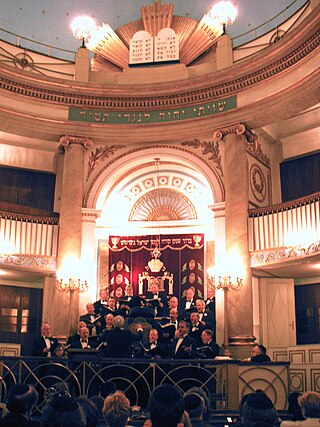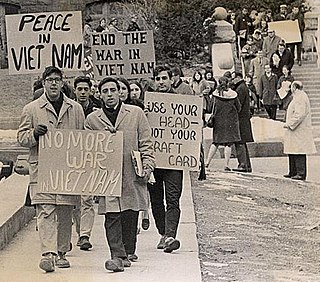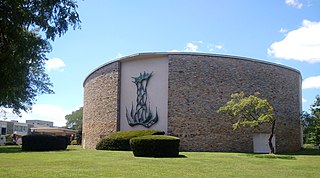Related Research Articles

Messianic Judaism is a modernist and syncretic movement of Protestant Christianity that incorporates some elements of Judaism and other Jewish traditions into evangelicalism.

Meshullam Zalman Schachter-Shalomi, commonly called "Reb Zalman", was one of the founders of the Jewish Renewal movement and an innovator in ecumenical dialogue.

A hazzan or chazzan is a Jewish musician or precentor trained in the vocal arts who helps lead the congregation in songful prayer. In English, this prayer leader is often referred to as a cantor, a term also used in Christianity.

Youth culture refers to the societal norms of children, adolescents, and young adults. Specifically, it comprises the processes and symbolic systems that are shared by the youth and are distinct from those of adults in the community.

Jewish Renewal is a recent Jewish religious movement that endeavors to reinvigorate modern Judaism with Kabbalistic, Hasidic, and musical practices. Specifically, it seeks to reintroduce the "ancient Judaic traditions of mysticism and meditation, gender equality and ecstatic prayer" to synagogue services. It is distinct from the baal teshuva movement of return to Orthodox Judaism.
The Union for Reform Judaism (URJ), known as the Union of American Hebrew Congregations (UAHC) until 2003, founded in 1873 by Rabbi Isaac Mayer Wise, is the congregational arm of Reform Judaism in North America. The other two arms established by Rabbi Wise are the Hebrew Union College-Jewish Institute of Religion and the Central Conference of American Rabbis. The current president of the URJ is Rabbi Rick Jacobs.
The Union of Orthodox Rabbis of the United States and Canada (UOR), often called by its Hebrew name, Agudath Harabonim or Agudas Harrabonim ("union of rabbis"), was established in 1901 in the United States and is the oldest organization of Orthodox rabbis in the United States. It had been for many years the principal group for such rabbis, though in recent years it has lost much of its former membership and influence.

Congregation Beth Israel is a synagogue located in West Hartford, Connecticut. The synagogue is one of the two oldest Jewish congregations in Connecticut and one of the largest Reform Jewish congregations in New England, with about 900 member families and about 2,000 individual members.

Chizuk Amuno Congregation is a large Jewish house of worship affiliated with Conservative Judaism. It is located in Pikesville, Maryland. The congregation's name comes from the Hebrew "Chizzuq 'Emunah", meaning "strengthening the faith". The word "Amuno" is a variant of the Ashkenazi Hebrew pronunciation of "'Emunah".
Rav is the Hebrew generic term for a person who teaches Torah; a Jewish spiritual guide; or a rabbi. For example, Pirkei Avot (1:6) states that:
(..) Joshua ben Perachiah says, "Set up a teacher [RaB] for yourself. And get yourself a friend [HaBeR]. And give everybody the benefit of the doubt."
The history of the Jews in Omaha, Nebraska, goes back to the mid-1850s.

The baal teshuva movement is a description of the return of secular Jews to religious Judaism. The term baal teshuva is from the Talmud, literally meaning "master of repentance". The term is used to refer to a worldwide phenomenon among the Jewish people.
A singles event is an activity or program made available specifically to the romantically unattached, often with the underlying or explicit purpose of fostering dating or relationships among attendees.
Orthodox Jewish feminism is a movement in Orthodox Judaism which seeks to further the cause of a more egalitarian approach to Jewish practice within the bounds of Jewish Law. The major organizations of this movement is the Jewish Orthodox Feminist Alliance (JOFA) in North America, and Women of the Wall (WOW) and its affiliates in Israel and internationally, known as The International Committee for Women of the Wall (ICWOW). In Israel, the leading Orthodox feminist organization is Kolech, founded by Dr. Chana Kehat. In Australia, there is one Orthodox partnership minyan, Shira Hadasha, in Melbourne.

The Jewish Center is a Modern Orthodox synagogue on New York City's Upper West Side.
The cantor in the Reform movement is a clergy member who fills a diverse role within the Jewish community. Cantors lead worship, officiate at lifecycle events, teach adults and children, run synagogue music programs, and offer pastoral care. Cantors typically serve along with other clergy members, usually rabbis and occasionally additional cantors, in partnership to lead synagogue communities. The Reform cantor is a professional office with a prescribed educational path and professional organization. Cantors are "invested", a term borrowed from the idea of priestly vestments, at the conclusion of study. "Investiture" confers the status of clergy to cantors, just as "ordination" does for rabbis.
An independent minyan is a lay-led Jewish worship and study community that has developed independently of established denominational and synagogue structures within the organized Jewish community. Some began in the late 1990s and most since the year 2000, though some are several decades older. These new groups often combine a commitment to halakha/Jewish law with egalitarianism, and strive to create worship services where traditional prayer can become "spiritual experiences."

Congregation Sherith Israel is one of the oldest synagogues in the United States. It was established during California’s Gold Rush period and reflects the ambitions of early Jewish settlers to San Francisco. Today it is a congregation widely known for its innovative approach to worship and lifecycle celebrations and is part of the movement of Reform Judaism. Its historic sanctuary building is one of San Francisco's most prominent architectural landmarks and attracts visitors from all over the world.

Steven M. Cohen is an American sociologist whose work focuses on the American Jewish Community. He served as a Research Professor of Jewish Social Policy at Hebrew Union College-Jewish Institute of Religion, and the Director of the Berman Jewish Policy Archive at Stanford University until his resignation in July 2018 after he was accused of sexual harassment.

Society Hill Synagogue is a synagogue located in the Society Hill section of Center City, Philadelphia. The synagogue is home to a 300-household congregation with Shabbat and holiday services, a Playschool for children 18 months to 5 years old, a Hebrew School for pre-kindergartners through high school students, adult education, social and communal activities, impactful social action, and engaging intergenerational programs.
References
- ↑ "I am not sure what "young professionals" means..." After the storm: American society a decade after the Vietnam War : proceedings of the International Conference on "The U.S.A.: A Decade After the Vietnam War", 1987, p. 33
- 1 2 Arun Arora and Andrew Francis, The rule of lawyers in Modernising Britain, Fabian Discussion Papers, iss. 42, 1998, p. 4
- 1 2 John Taylor, 'Down With M.B.A.'s' , New York magazine, November 2, 1987, p. 36
- ↑ Max Luca. do, The applause of heaven, 1996, p. 120
- ↑ Engaging Generation Aleph: A Resource for Young Adults in the Synagogue, Union of American Hebrew Congregations, ed., 1997, p. 3
- ↑ Neighborhood organizing: nurturing strong, unified voices, charles Stewart Mott Foundation, ed., 2007, p. 8
- ↑ Glenn Omatsu, "Four Prisons" and the Movements of Liberation, in Asian American studies: a reader, Jean Yu-wen Shen Wu and Min Song, eds., 2000, p. 178
- ↑ Aart J. M. Van De Laar, The World Bank and the poor, in Series on the Development of Societies, Institute of Social Studies, ed., vol. 6, p. 101
- ↑ Government Executive, vol. 26, 1994, pp. 16, 18
- ↑ Ryan Kohnen, Young Professional's Guide to Success, 2009, pp. 1, 103
- ↑ Lisa C. Jones, Money Management for Young Professionals, Ebony, October 1992, p. 128
- ↑ Tanner Strasky, Find Your Inner Ugly Betty: 25 Career Lessons for Young Professionals Inspired by TV Shows, 2008
- ↑ Roger B. Winston, Don G. Creamer, and Theodore K. Miller, The professional student affairs administrator: educator, leader, and manager, 2001, p. 394
- ↑ Berk, Bernard (1976). "Face-Saving at the Singles Dance". Social Problems. 24 (5): 530–544 [p. 532]. doi:10.2307/800123. JSTOR 800123.
- ↑ Fried, Stephen (2002). The new rabbi: a congregation searches for its leader . Bantam Books. p. 57.
- ↑ Engaging Generation Aleph: A Resource for Young Adults in the Synagogue. Union of American Hebrew Congregations. 1997. p. 81. ISBN 9780807406410.
- ↑ Engaging Generation Aleph: A Resource for Young Adults in the Synagogue. Union of American Hebrew Congregations. 1997. p. 96. ISBN 9780807406410.